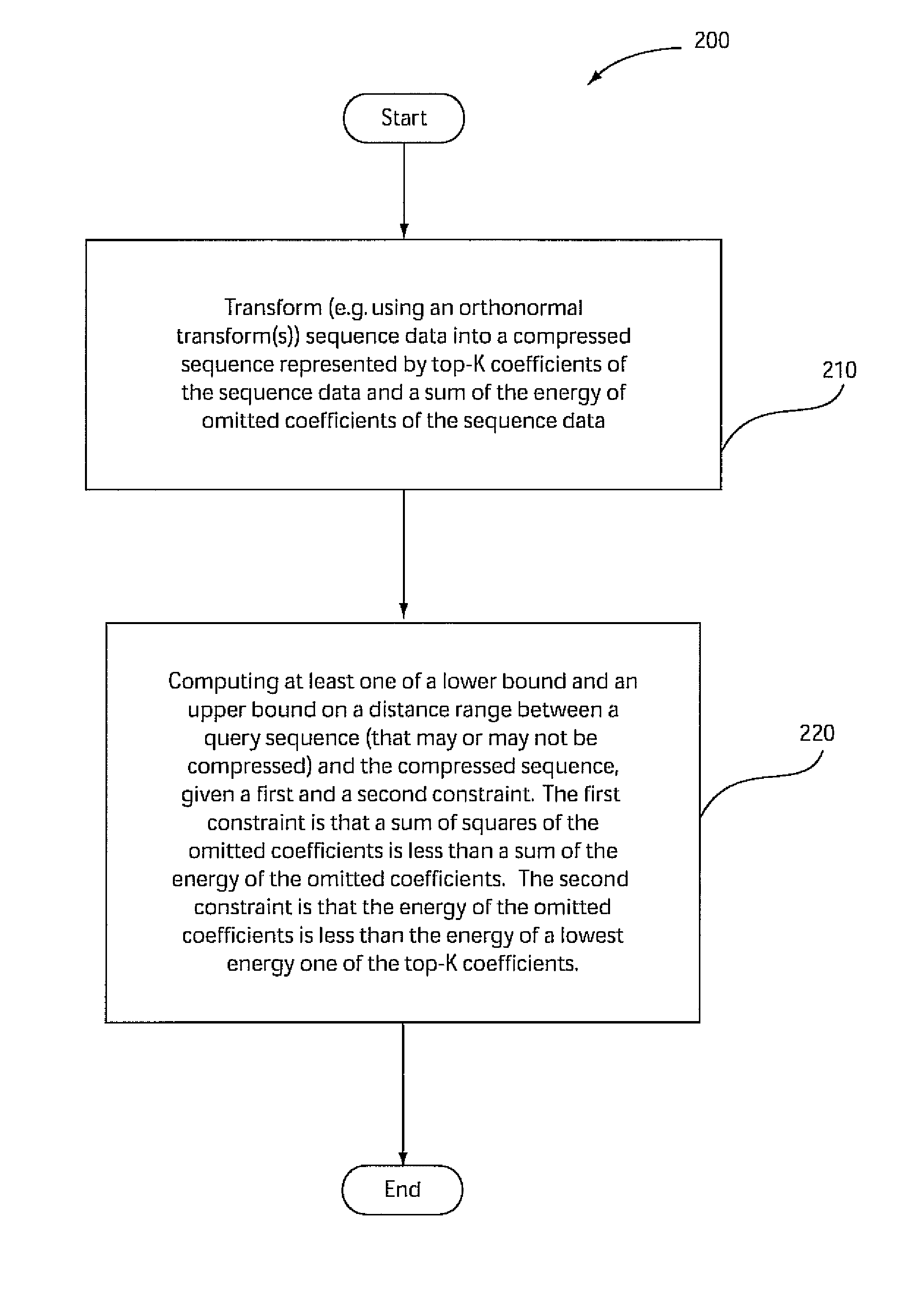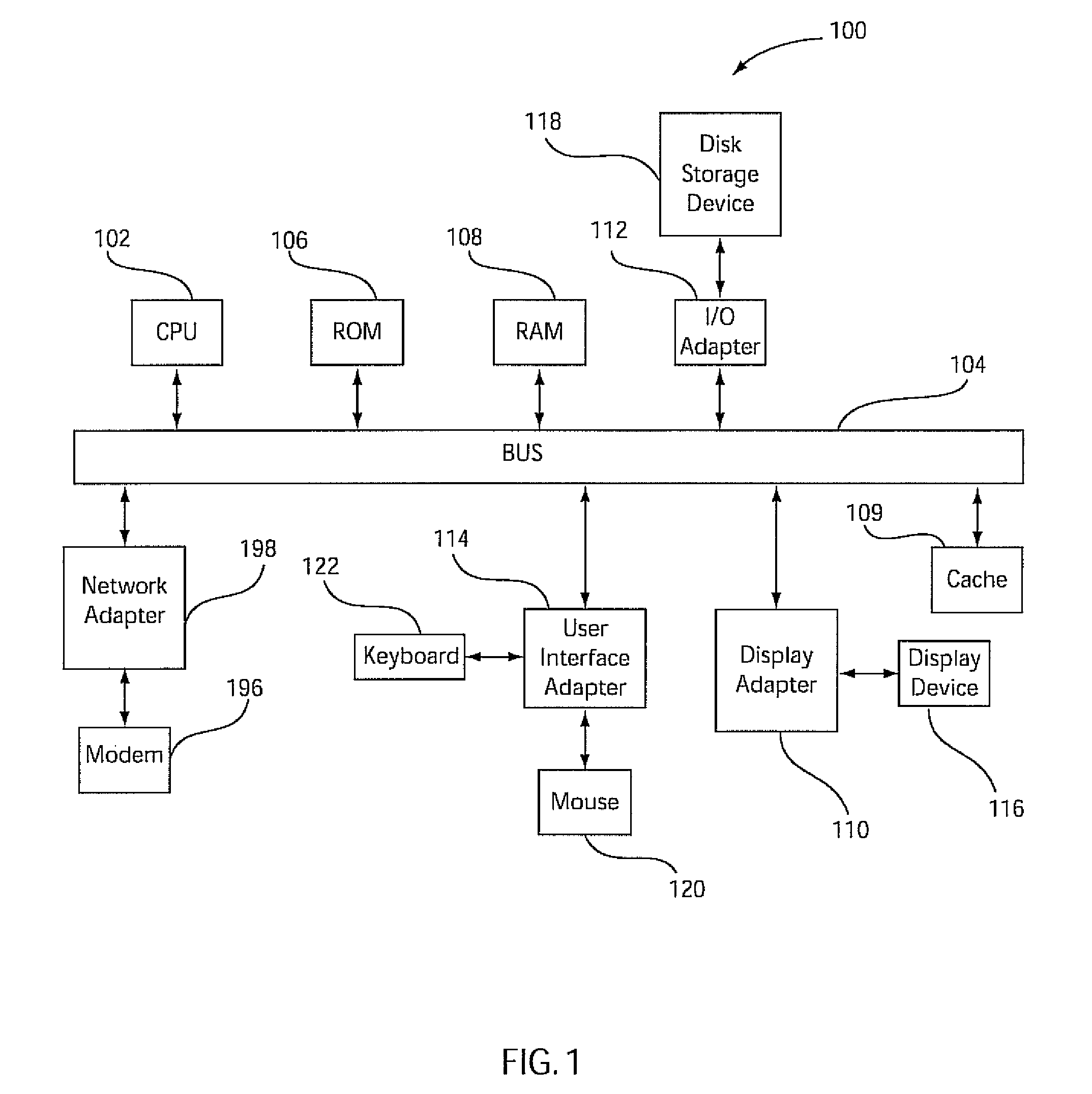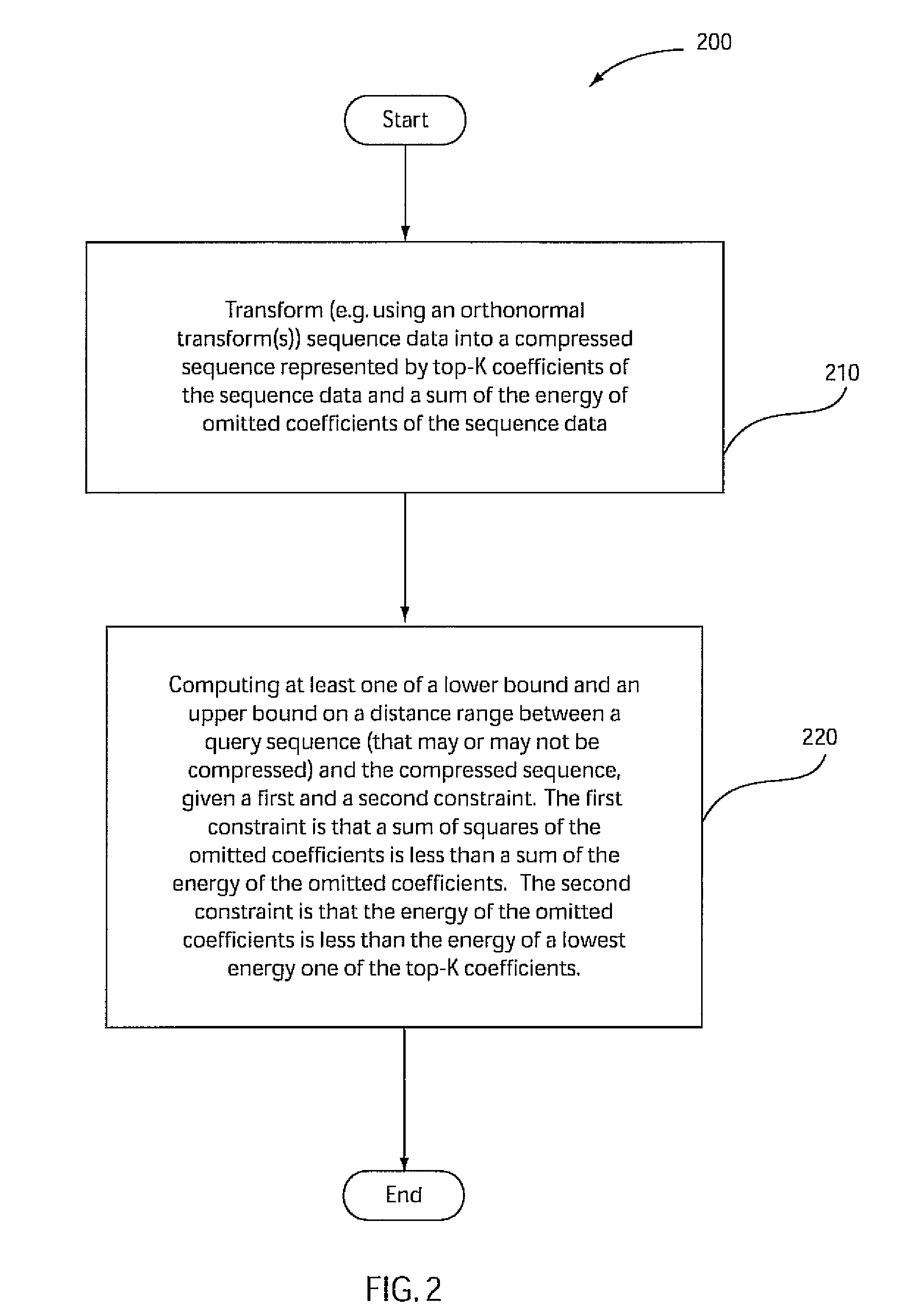Systems and methods for computation of optimal distance bounds on compressed time-series data
a time-series data and optimal distance technology, applied in the field of compressed time-series representations, can solve the problem that no prior art is directed to the tightest possible lower/upper bounds
- Summary
- Abstract
- Description
- Claims
- Application Information
AI Technical Summary
Benefits of technology
Problems solved by technology
Method used
Image
Examples
Embodiment Construction
Embodiments of the present principles are directed to systems and methods for computation of optimal distance bounds on compressed time-series data. Thus, any reference herein to lower bounds and upper bounds with respect to the inventive aspects of the present principles refer to optimal lower bounds and optimal upper bounds. Hence, when computing a lower bound and / or an upper bound on a distance range between a query sequence and a compressed sequence, given a first and second constraint, any of the lower bound and the upper bound is optimal by being substantially identical (as close as possible) to an actual distance between the query sequence and the compressed sequence, subject to an amount of compression of the compressed sequence (and also subject to an amount of compression of the query sequence when the query sequence is compressed).
It should be understood that the elements shown in the FIGURES may be implemented in various forms of hardware, software or combinations thereo...
PUM
 Login to View More
Login to View More Abstract
Description
Claims
Application Information
 Login to View More
Login to View More - R&D
- Intellectual Property
- Life Sciences
- Materials
- Tech Scout
- Unparalleled Data Quality
- Higher Quality Content
- 60% Fewer Hallucinations
Browse by: Latest US Patents, China's latest patents, Technical Efficacy Thesaurus, Application Domain, Technology Topic, Popular Technical Reports.
© 2025 PatSnap. All rights reserved.Legal|Privacy policy|Modern Slavery Act Transparency Statement|Sitemap|About US| Contact US: help@patsnap.com



